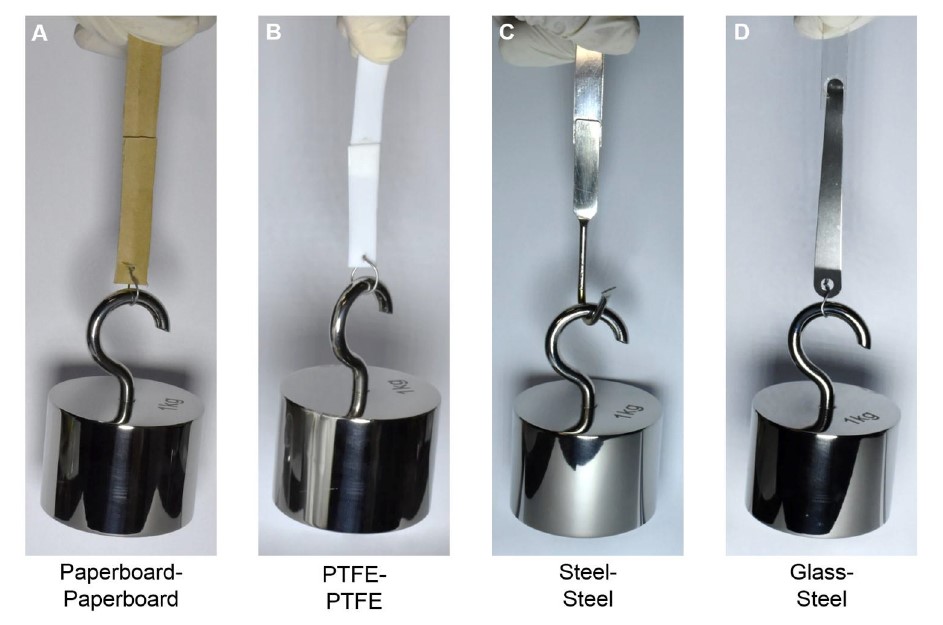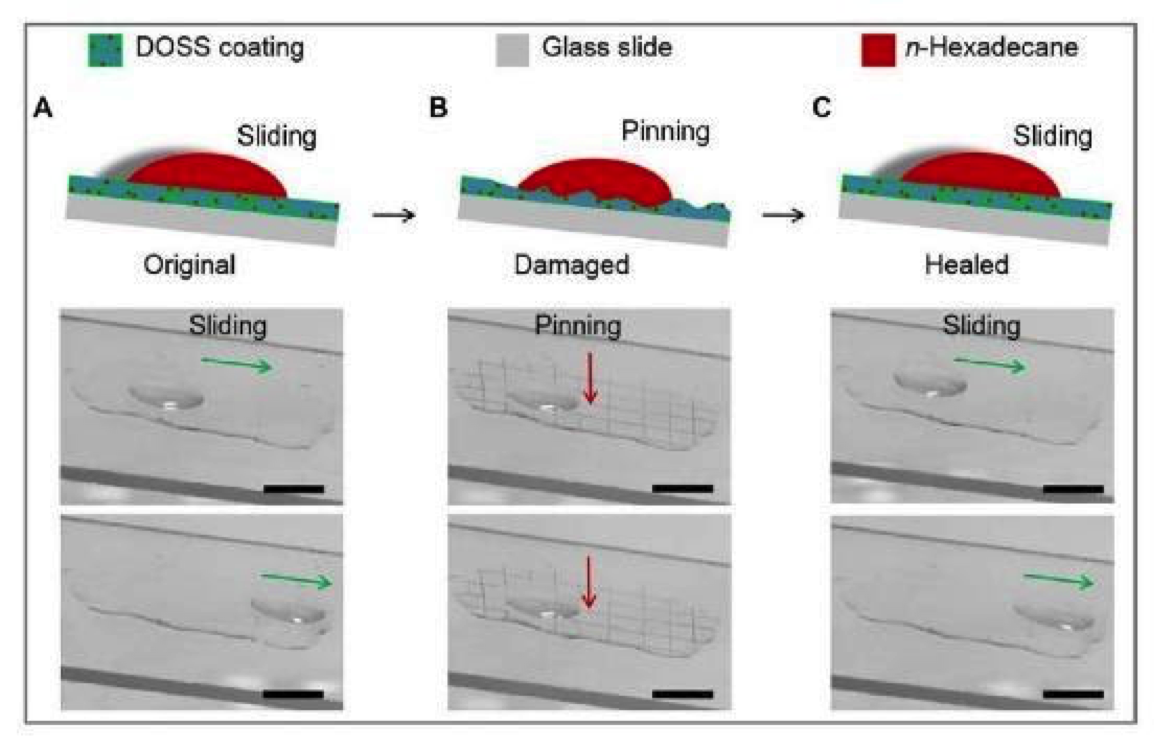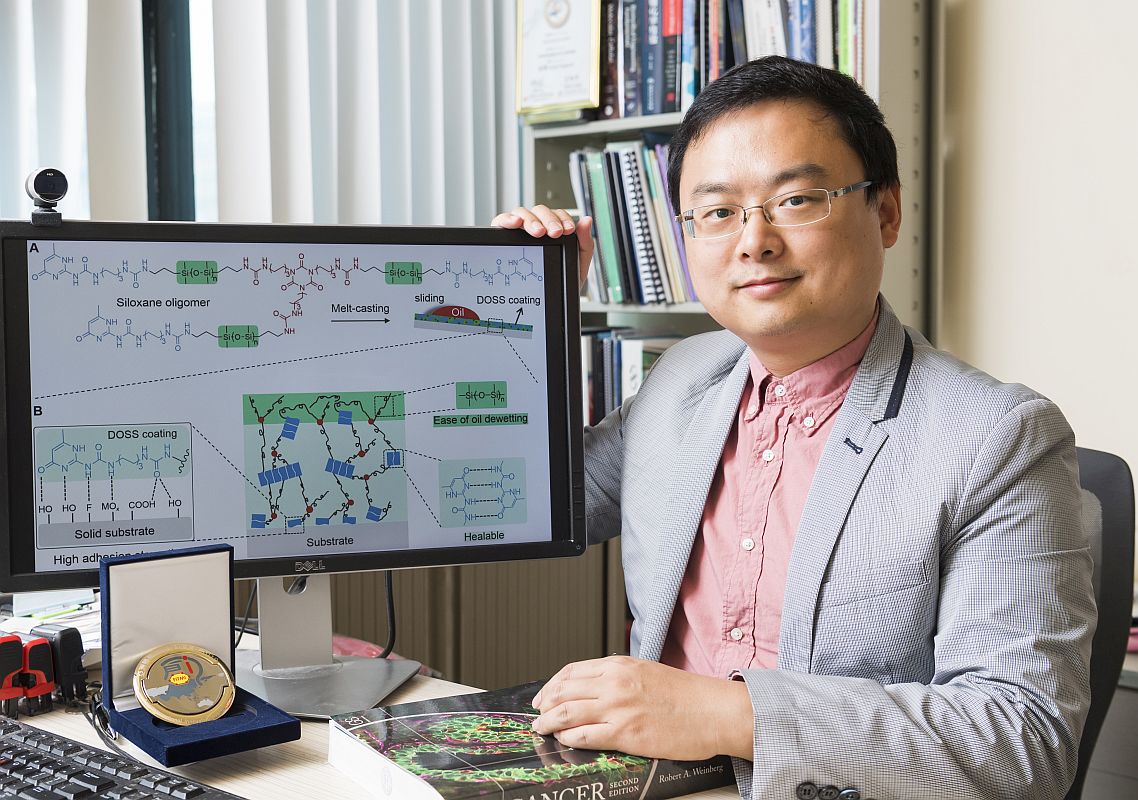A new supramolecular silicone coating: damage-healable, oil-repellent and adhesive to various materials
A research project led by City University of Hong Kong (CityU) has invented a new supramolecular silicone (DOSS) coating with inherent damage-healing and oil-repellent properties which can be adhesive to various materials. The research team managed to overcome the existing materials’ limitations by molecular engineering. They envision that it can be utilized in self-cleaning, antifouling, catalysis, energy storage and heat transfer with broad applications in the energy, environmental, and biomedical aspects.
In daily lives and many industries, there are high demands to coating materials that are repellent to oil and water, as well as self-healing. However, the current molecular design does not allow materials to exhibit all these properties at the same time. For example, the oil-repellent property of the coating tends to reduce its interfacial adhesion to the substrates, making it difficult to be used as coating materials.
A research team led by Dr Yao Xi, Associate Professor of Department of Biomedical Sciences (BMS) from CityU successfully invented a new supramolecular material called “DOSS” (damage-healable, oil-repellent supramolecular silicone) coatings which harvest all three properties, namely damage-healing, adhesion to solid surface and oil-repellence. It took the team almost three years to design this new material.
The invention was just awarded the Gold Award of Asia Innovative Invention Award by the Hong Kong Federation of Innovative Technologies and Manufacturing Industries.
Adhesion greatly enhanced with unique three-arm molecular design
“This siloxane oligomer is molecularly engineered with a unique three-arm design, in a way that a large number of hydrogen bondings can be formed orderly as a network, and hence strengthen the bonding. This not only enables the coating to stick on solid surfaces but also enhances its self-healing property,” said Dr Yao.

The team discovered that a weight of 1 kg could be hung up after two glass slides adhered with DOSS with a glued area of only 1cm2. The strong interaction between the DOSS coating and the substrate through hydrogen bonding enables the coating to adhere to various substrates firmly. Different tests carried out by the research team concluded that the new material sticks well on a variety of substrates including paper, aluminum, copper, plastics, and even the hydrophobic Teflon.

Oil-repellent and Self-healing properties
Moreover, the team showed that the DOSS coating could repel most of the commercial edible oils. This could be ascribed to the weak interaction between the oil droplet and the siloxane-enriched surface. As a result, the coating displays oil-repelling and antifouling effect.
In addition, the coating exhibits excellent damage-healing properties. The team first used a blade to cut lines on the coating and then observed how the oil drop slid on the surface. The oil drop was blocked and pinned in the damaged area. Subsequently, they removed the residual oil on the surface by blowing nitrogen gas on it for 20 seconds and heating at 90°C for 15 minutes to facilitate the coating recovery. The cross-cutting lines disappeared, and the oil drop slid smoothly on the healed surface.
“The coating would ‘heal’ faster if being heated, as the polymer chains have better mobility at higher temperature and would migrate more rapidly, facilitating the damaged interface to re-organise and form the hydrogen bonding again,” said Dr Yao. The team also discovered that the repeated “damage and heal” process would not affect the chemical structure of the coating, suggesting great potential of the coating to work in harsh environmental conditions.

Dr Yao said that since the DOSS’s oil repellency makes the surface easy to be cleaned, it can be used as an anti-smudge coating for medical equipment, or even painted on the walls to prevent graffiti. He added that the self-healing property is useful for anti-fingerprint coating for electronic gadgets and windshields, and in harsh conditions where repair and maintenance would be difficult to achieve, such as aviation, aerospace and marine industries, solar panels, artificial skin, and soft robot.
Moreover, using silicone as one of the main raw materials allowed the coating cost to be significantly lower than that of market products made from fluorinated molecules. Dr Yao believed it would not only enhance the product development but also promote the products for wider use. Their next step is to commercialize the material and the US patent application has been filed.
The research findings were published in the scientific journal Science Advances, titled “Supramolecular silicone coating capable of strong substrate bonding, readily damage healing, and easy oil sliding”. Dr Yao is the corresponding author of the paper. The first author is Dr Liu Meijin, a researcher and Ph.D. graduate of the BMS department at CityU. They collaborated with Professor Wang Zuankai from CityU’s Department of Mechanical Engineering, as well as Wang Zhaoyue and Liu Peng from the BMS department. Dr Yao Haimin from the Hong Kong Polytechnic University is also one of their team members.

The research was supported by the National Natural Science Foundation of China, the General Research Fund and the Collaborative Research Fund of University Grants Committee, Hong Kong.
DOI number: 10.1126/sciadv.aaw5643